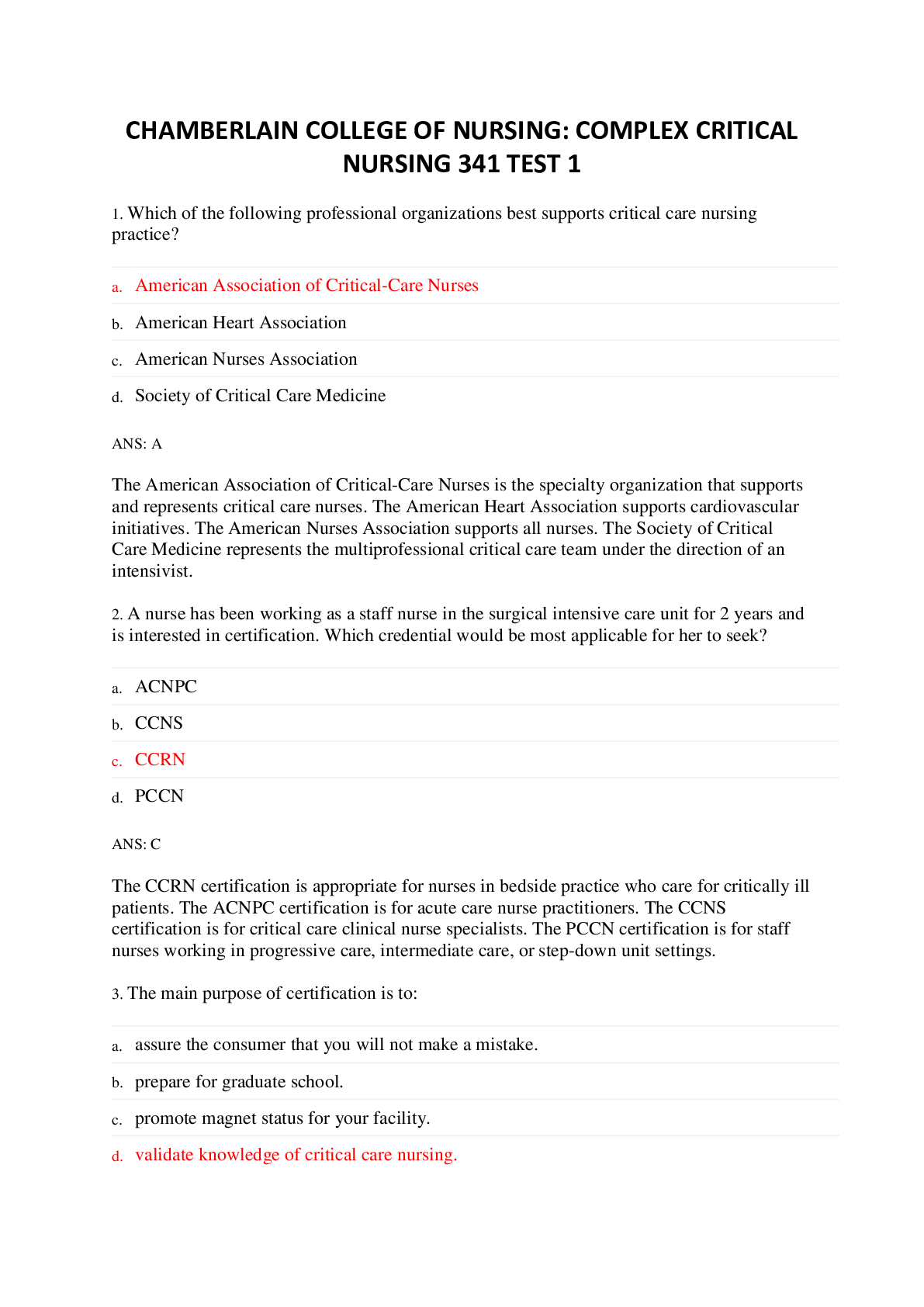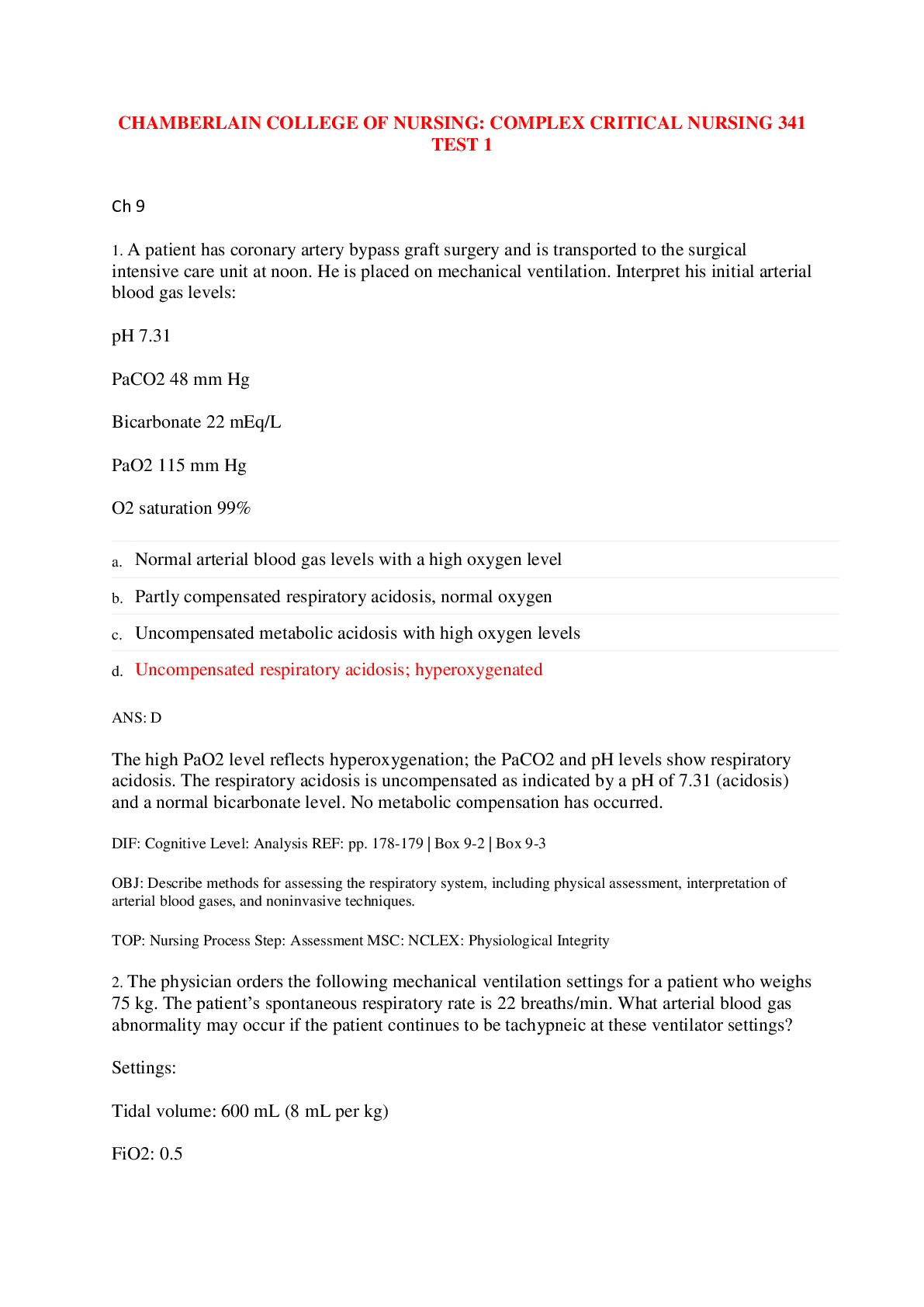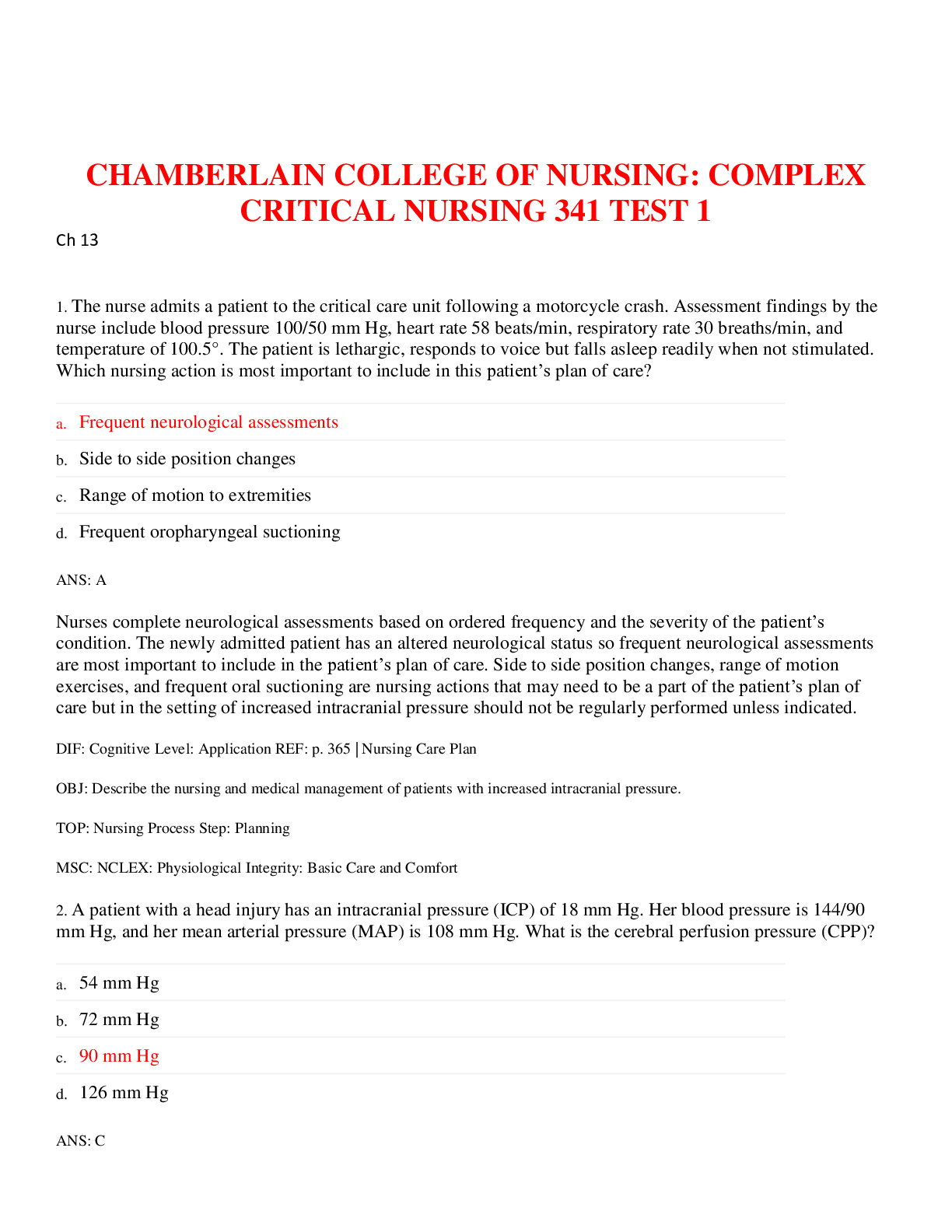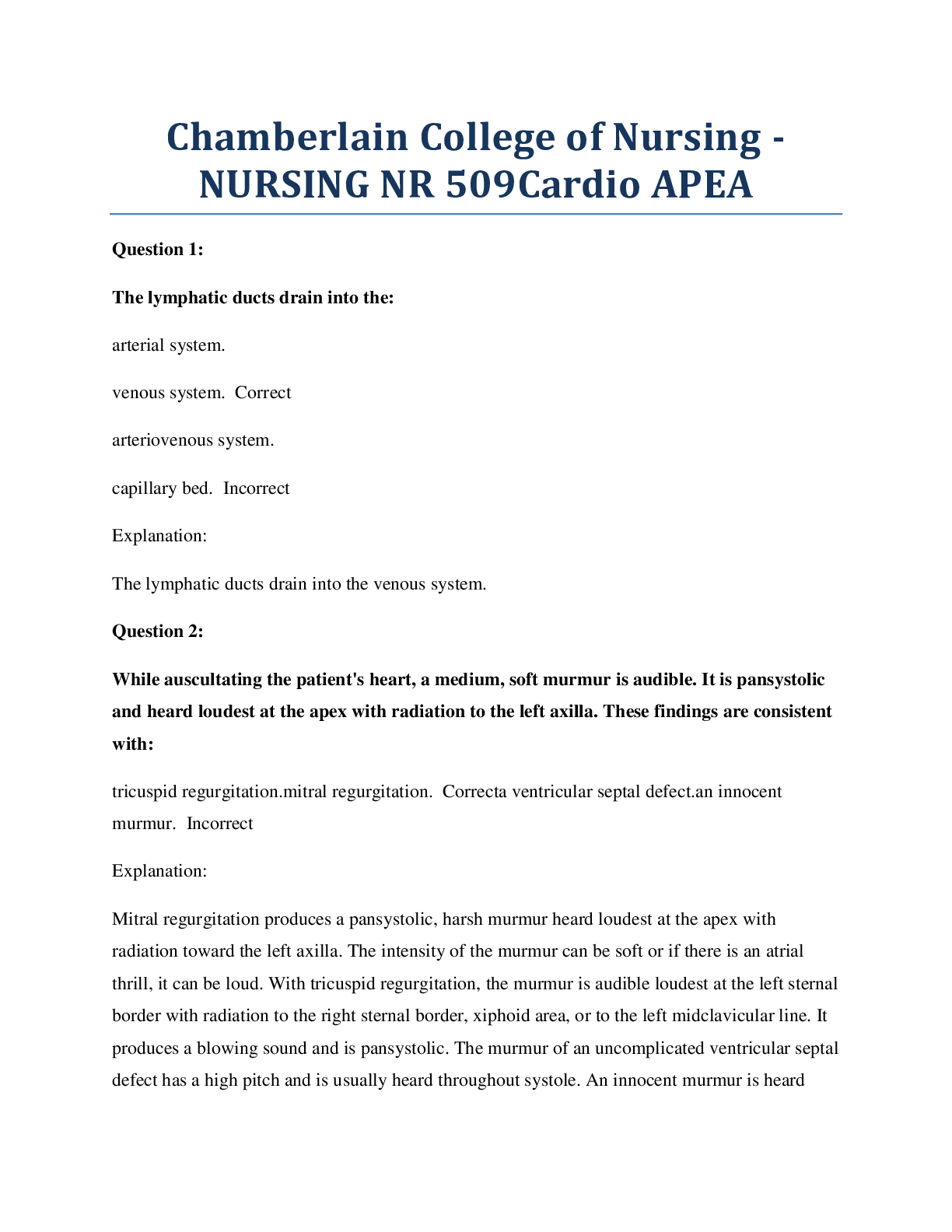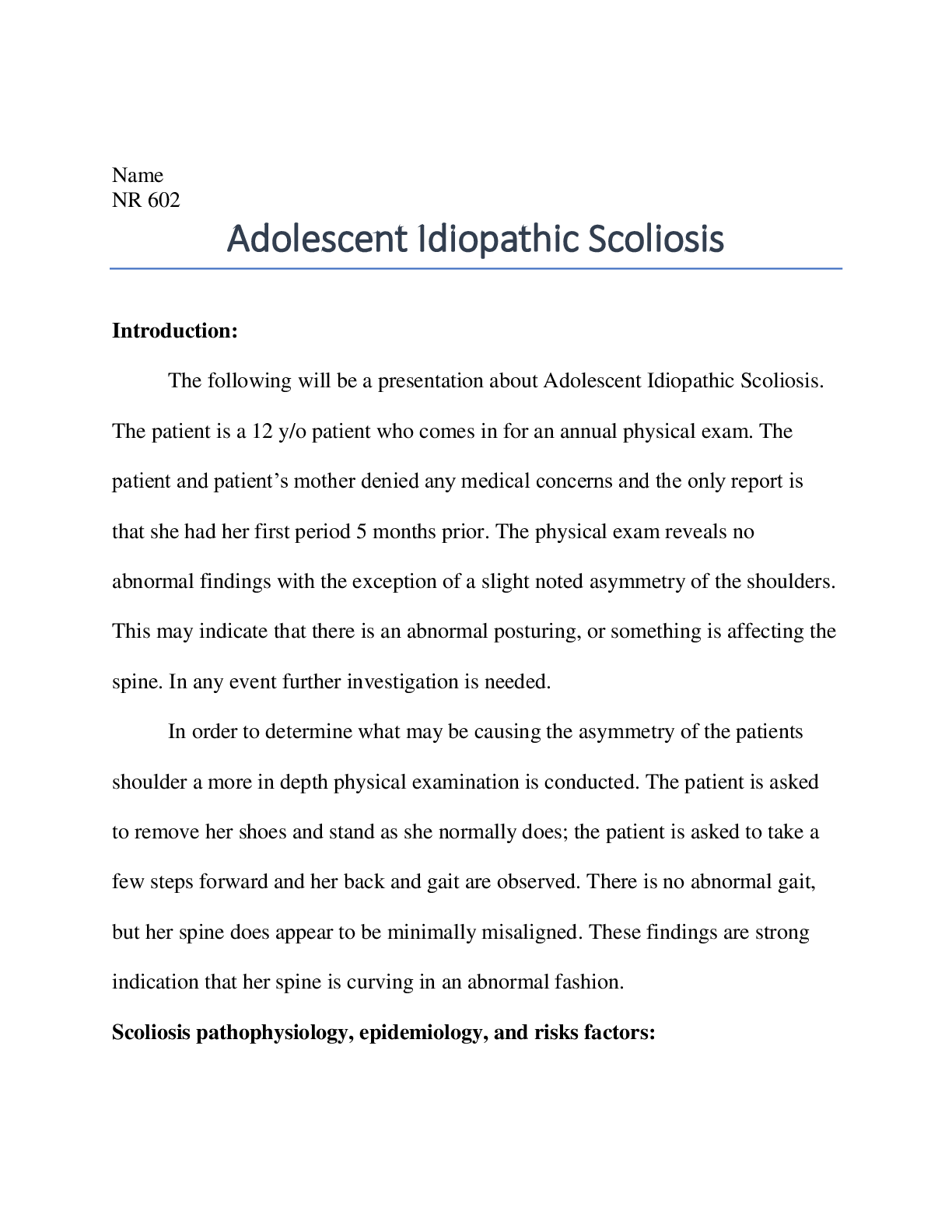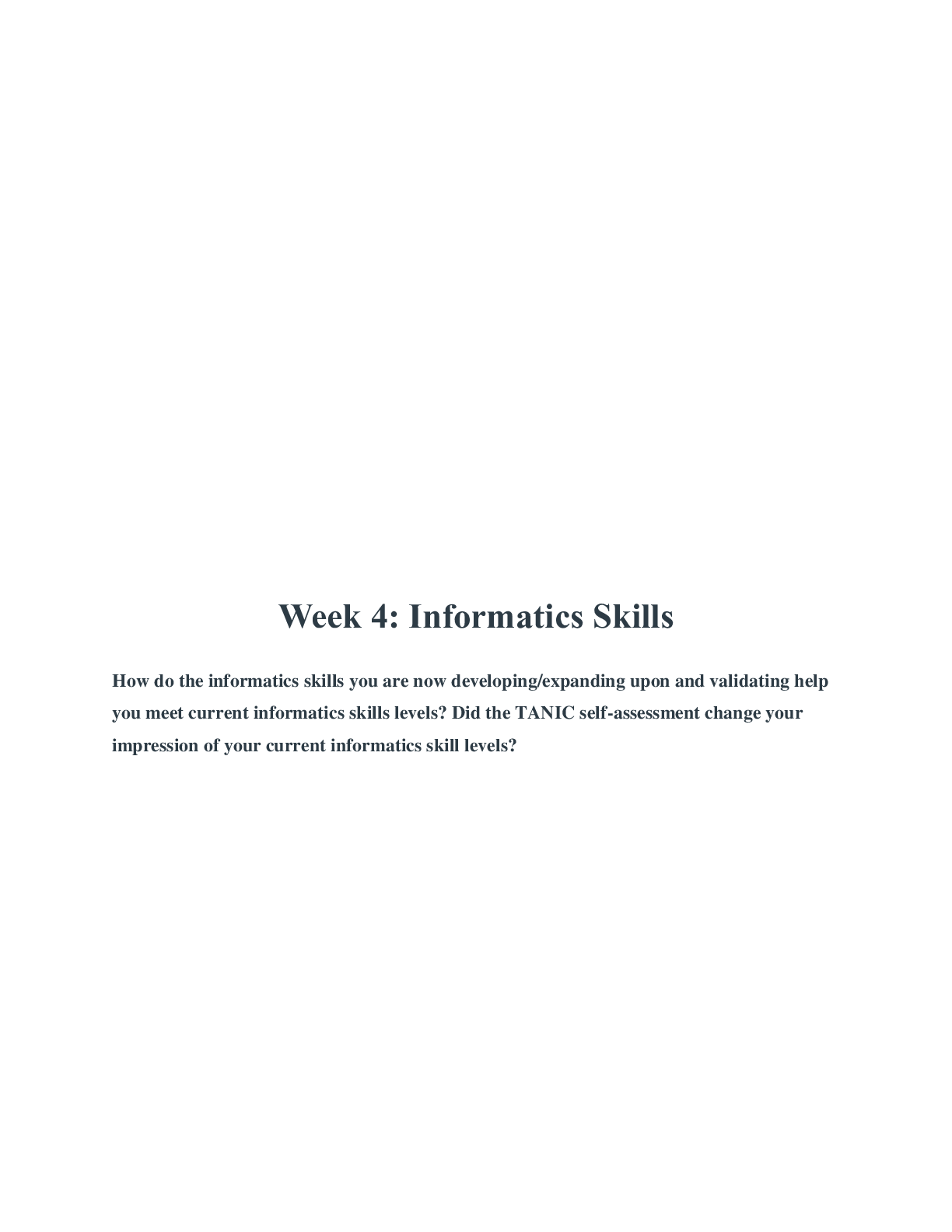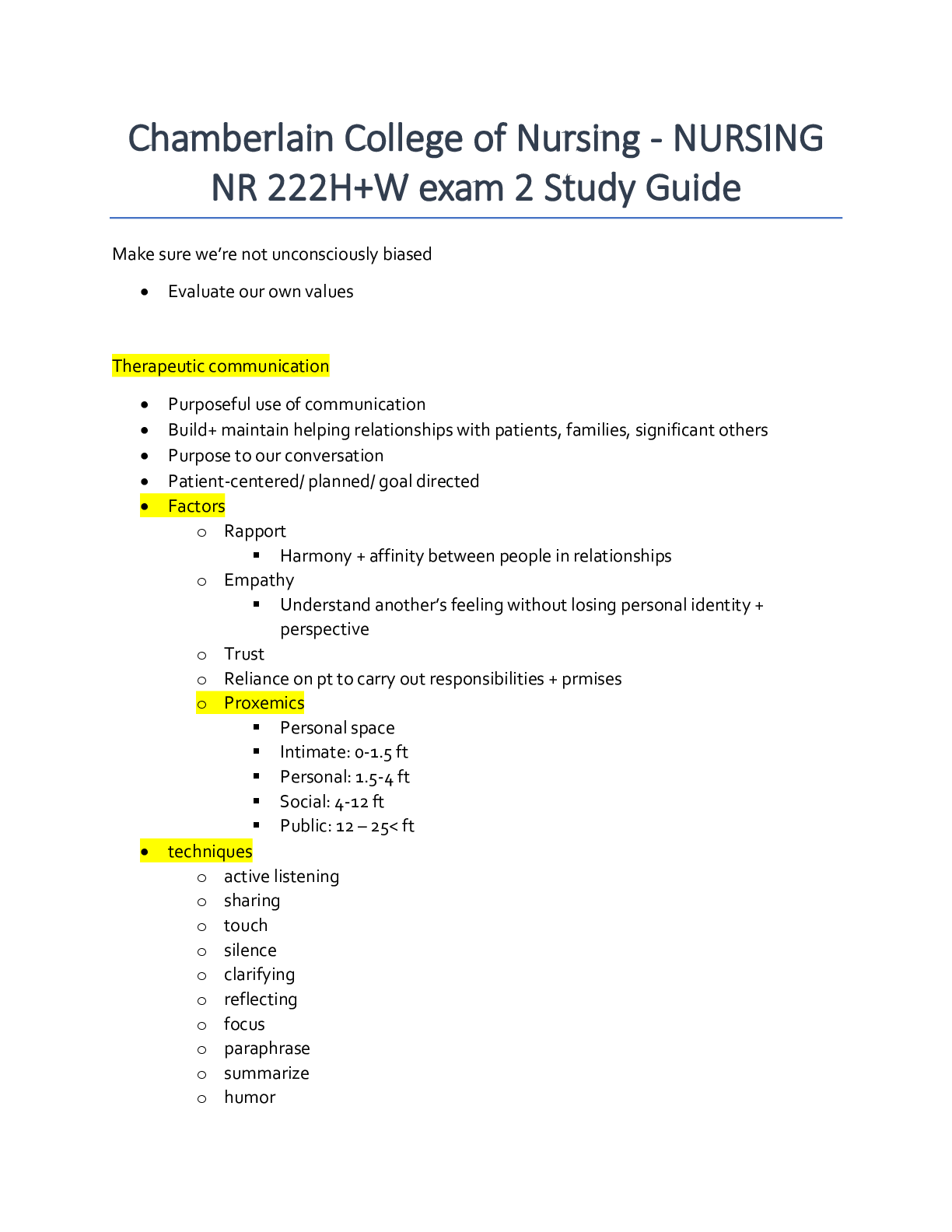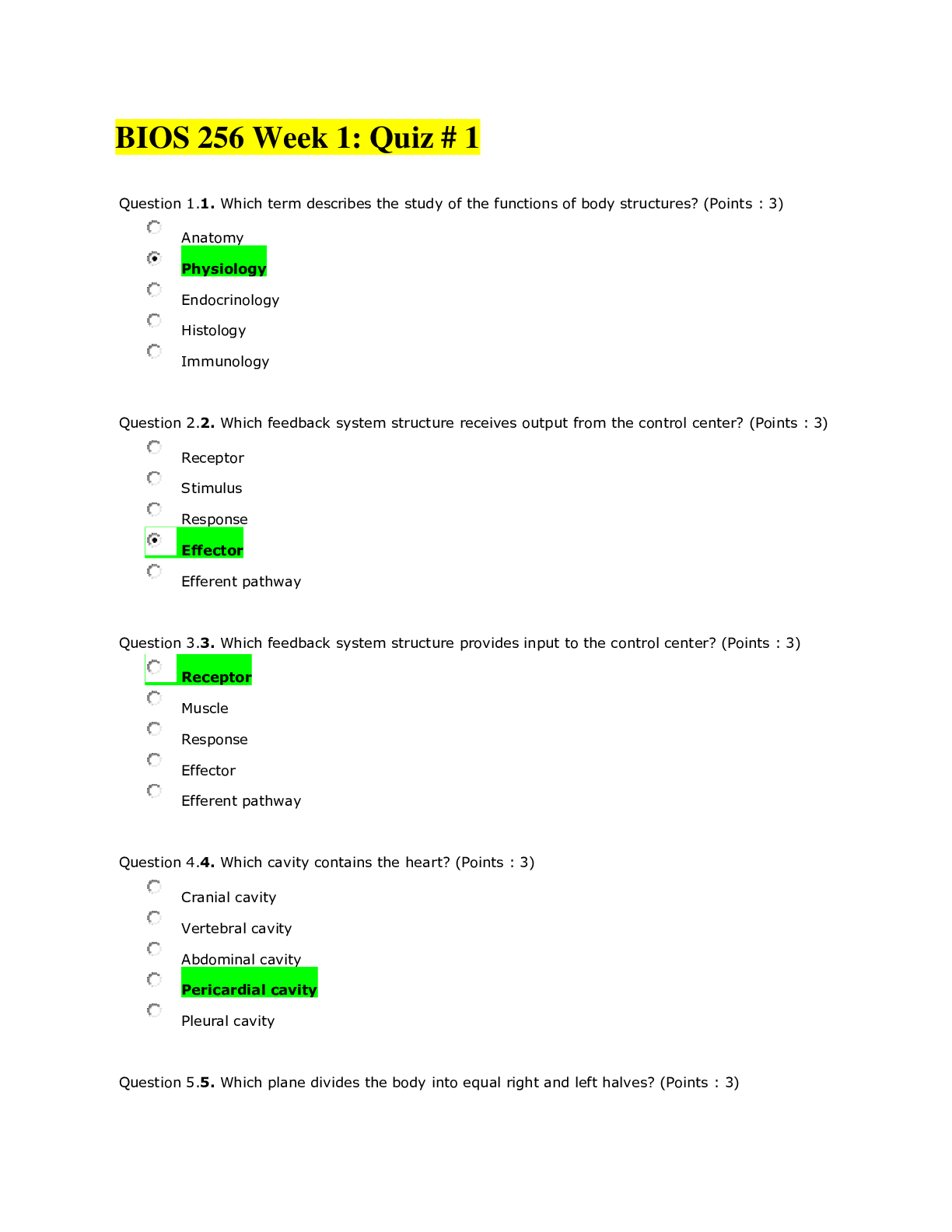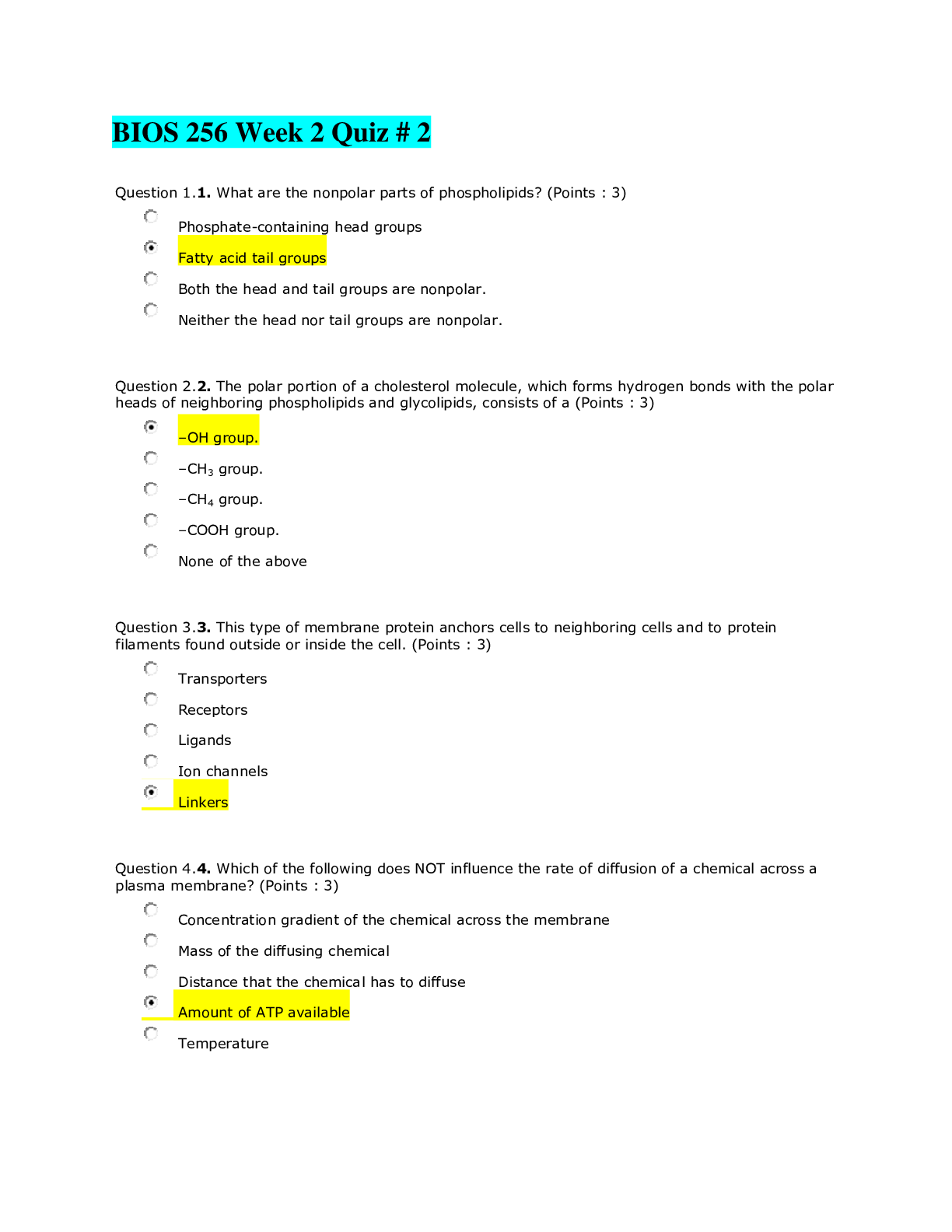Health Care > QUESTIONS & ANSWERS > ATI Interpretation and Management of Basic Dysrhythmias, Chapter 4: Perrin: Understanding the Essent (All)
ATI Interpretation and Management of Basic Dysrhythmias, Chapter 4: Perrin: Understanding the Essentials of Critical Care Nursing, Chamberlain College of Nursing NR 341 (A Graded) Latest Questions and Complete Solutions
Document Content and Description Below
ATI Interpretation and Management of Basic Dysrhythmias, Chapter 4: Perrin: Understanding the Essentials of Critical Care Nursing, Chamberlain College of Nursing NR 341 (A Graded) Latest Questions and... Complete Solutions Perrin: Understanding the Essentials of Critical Care Nursing Chapter 4: Interpretation and Management of Basic Dysrhythmias MULTIPLE CHOICE. Choose the one alternative that best completes the statement or answers the questions 1) A 57- year- old male patient is admitted to the telemetry unit with new onset of weakness and fatigue. The following rhythm is now seen on the monitor and the patient is now complaining of shortness of breath and mild chest discomfort. Which of the following medications would be appropriate for this patient? A) Give epinephrine 1 mg IV. B) Give atropine 0.5 mg IV. C) Give adenosine 6 mg IV. D) Give amiodarone 300 mg IV. Answer: B Explanation: A) Because this patient is complaining of shortness of breath and mild chest discomfort, he is considered to be unstable. For the unstable patient, the treatment of choice for this rhythm (second degre-etype I block) is atropine 0.5 to 1 mg IV. #1 is not correct because epinephrine is not indicated for unstable bradycardias. #3 is not correct because adenosine is the treatment for SVT and slows the heart rate down. #4 is not correct because amiodarone is the treatment for ventricular irritability as seen with ventricular fibrillation and pulseless ventricular tachycardia. Nursing Process: Analysis Cognitive Level: Application Analysis Category of Need: Pharmacological and Parenteral Therapies B) Because this patient is complaining of shortness of breath and mild chest discomfort, he is considered to be unstable. For the unstable patient, the treatment of choice for this rhythm (second degre-etype I block) is atropine 0.5 to 1 mg IV. #1 is not correct because epinephrine is not indicated for unstable bradycardias. #3 is not correct because adenosine is the treatment for SVT and slows the heart rate down. #4 is not correct because amiodarone is the treatment for ventricular irritability as seen with ventricular fibrillation and pulseless ventricular tachycardia. Nursing Process: Analysis Cognitive Level: Application Analysis Category of Need: Pharmacological and Parenteral Therapies C) Because this patient is complaining of shortness of breath and mild chest discomfort, he is considered to be unstable. For the unstable patient, the treatment of choice for this rhythm (second degre-etype I block) is atropine 0.5 to 1 mg IV. #1 is not correct because epinephrine is not indicated for unstable bradycardias. #3 is not correct because adenosine is the treatment for SVT and slows the heart rate down. #4 is not correct because amiodarone is the treatment for ventricular irritability as seen with ventricular fibrillation and pulseless ventricular tachycardia. Nursing Process: Analysis Cognitive Level: Application Analysis Category of Need: Pharmacological and Parenteral Therapies D) Because this patient is complaining of shortness of breath and mild chest discomfort, he is considered to be unstable. For the unstable patient, the treatment of choice for this rhythm (second degre-etype I block) is atropine 0.5 to 1 mg IV. #1 is not correct because epinephrine is not indicated for unstable bradycardias. #3 is not correct because adenosine is the treatment for SVT and slows the heart rate down. #4 is not correct because amiodarone is the treatment for ventricular irritability as seen with ventricular fibrillation and pulseless ventricular tachycardia. Nursing Process: Analysis Cognitive Level: Application Analysis Category of Need: Pharmacological and Parenteral Therapies [Show More]
Last updated: 1 year ago
Preview 1 out of 48 pages

Buy this document to get the full access instantly
Instant Download Access after purchase
Add to cartInstant download
We Accept:

Reviews( 0 )
$16.00
Document information
Connected school, study & course
About the document
Uploaded On
May 24, 2021
Number of pages
48
Written in
Additional information
This document has been written for:
Uploaded
May 24, 2021
Downloads
0
Views
14

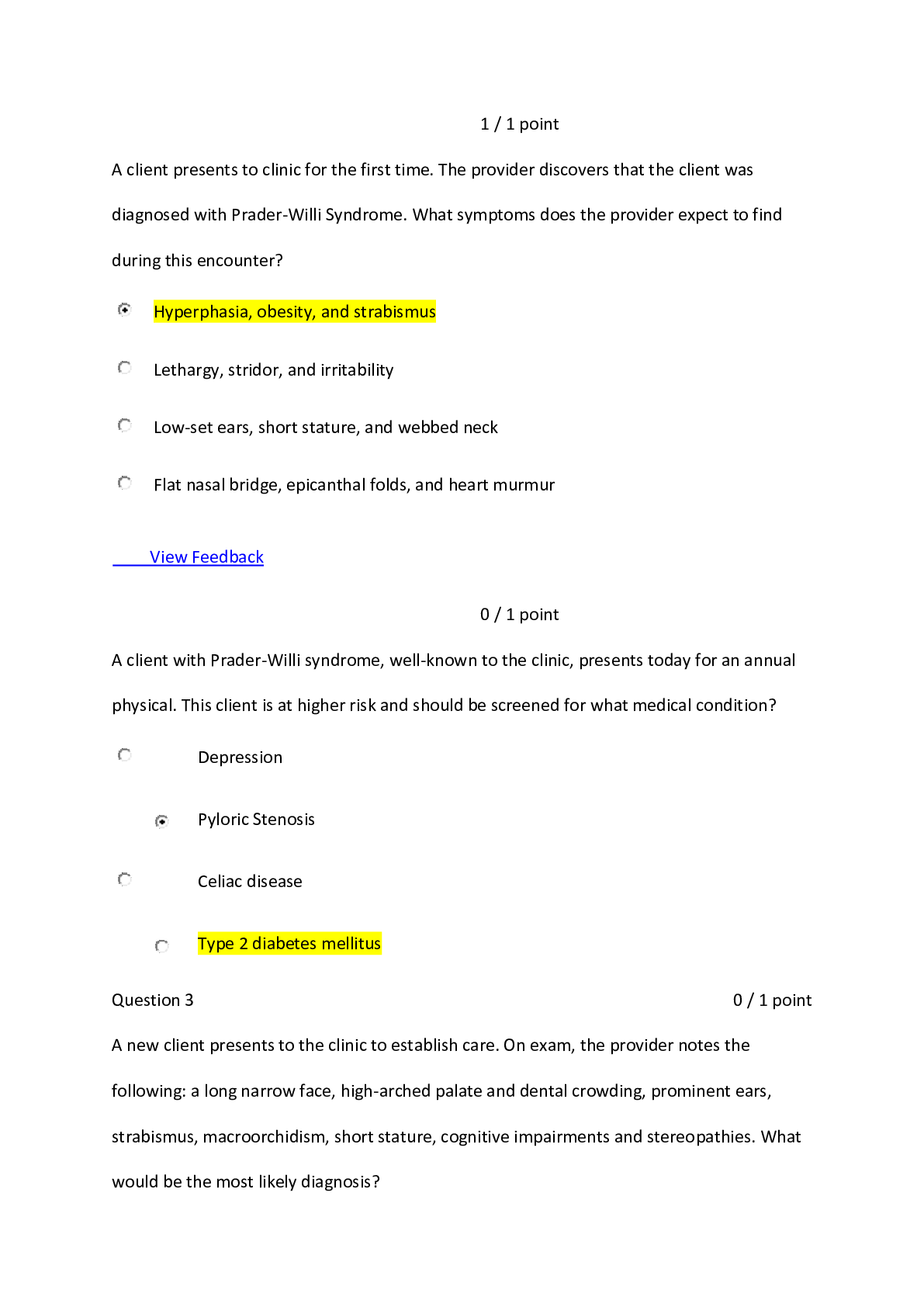
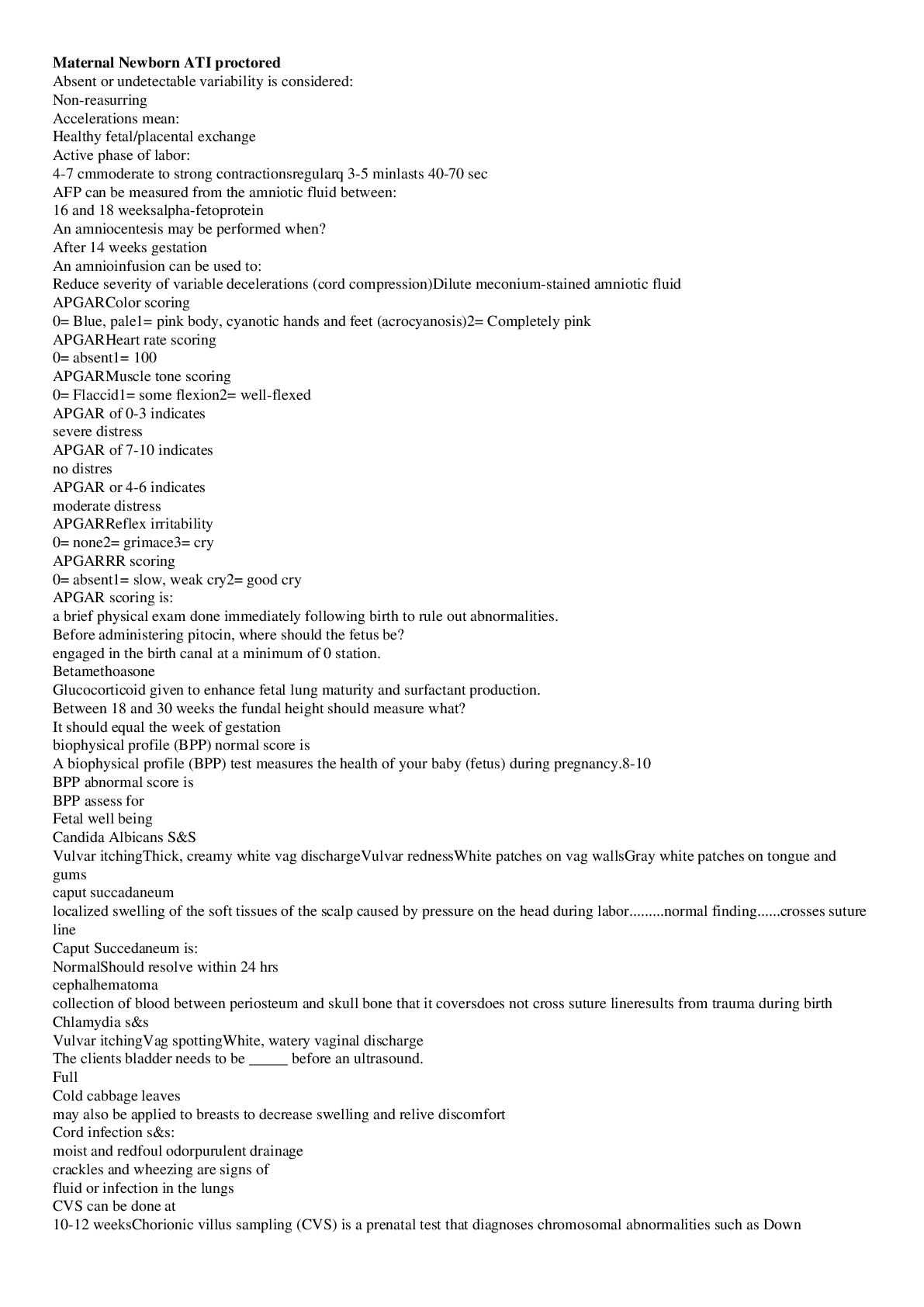
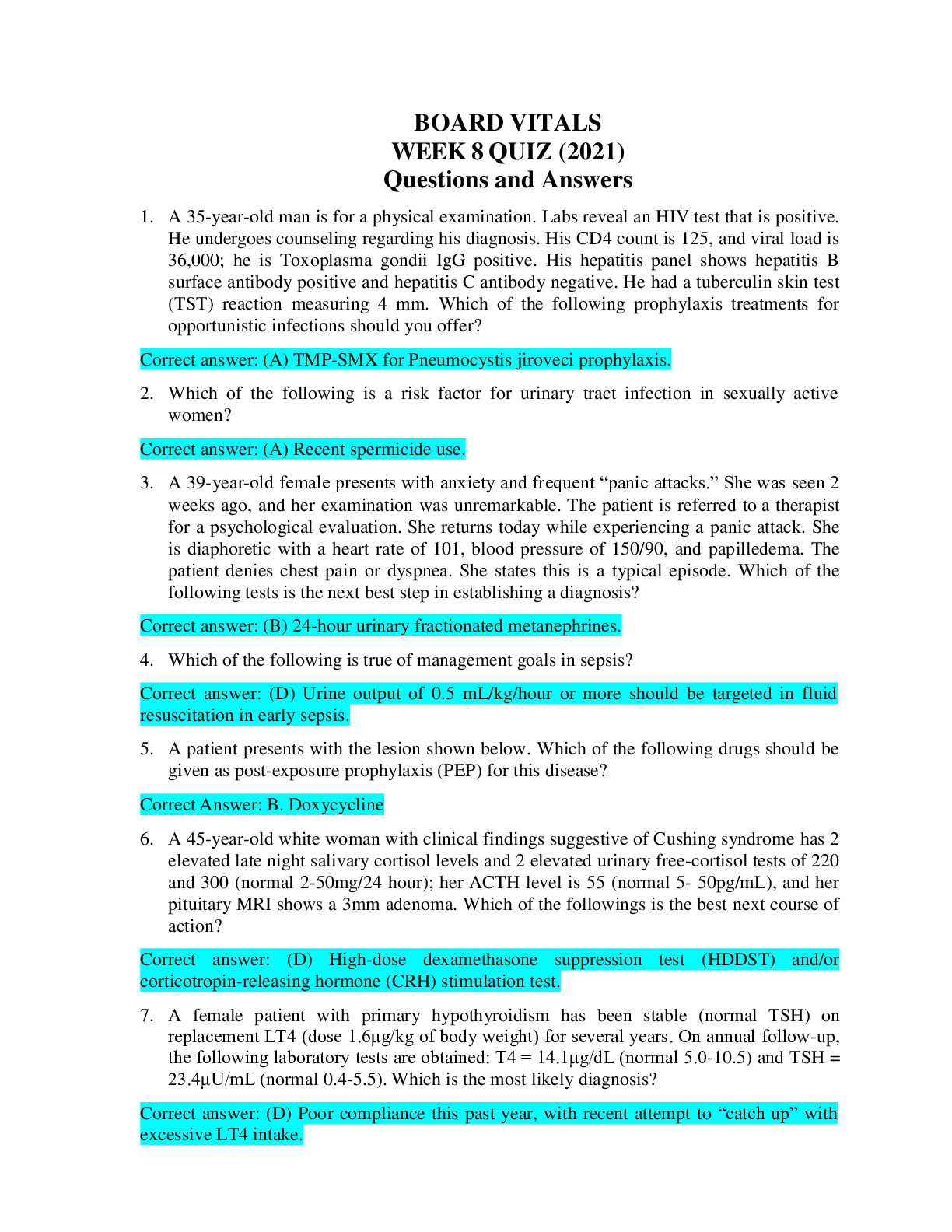

, (A Grade), Questions and Answers, All Correct Study Guide, Download to Score A.png)
, Questions and Answers, All Correct Study Guide, Download to Score A.png)
, Latest Questions and Answers with Explanations, All Correct Study Guide, Download to Score A.png)
, Latest Questions and Answers with Explanations, All Correct Study Guide, Download to Score A.png)
, Latest Questions and Answers with Explanations, All Correct Study Guide, Download to Score A.png)
, Latest Questions and Answers with Explanations, All Correct Study Guide, Download to Score A.png)
 (Verified Answers, COMPLETE GUIDE FOR EXAM PREPARATION).png)
 All Correct Answers, Download to Score A.png)
